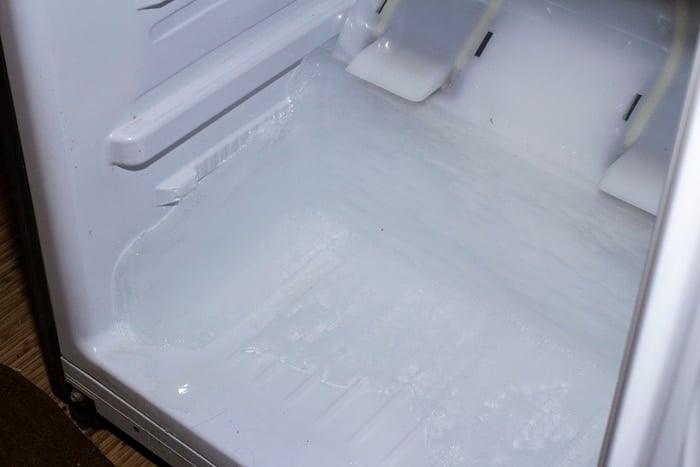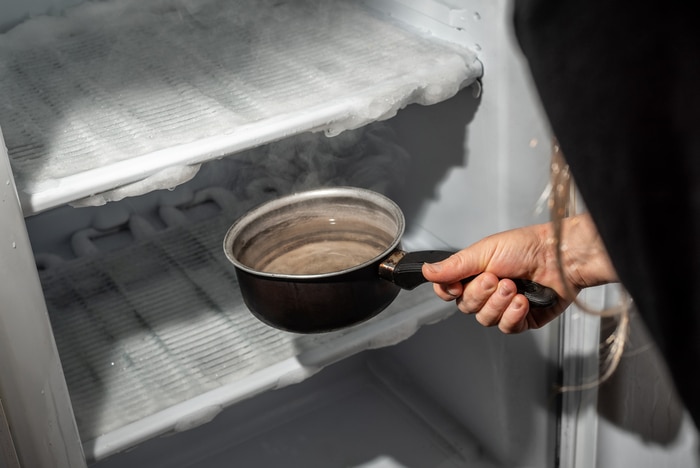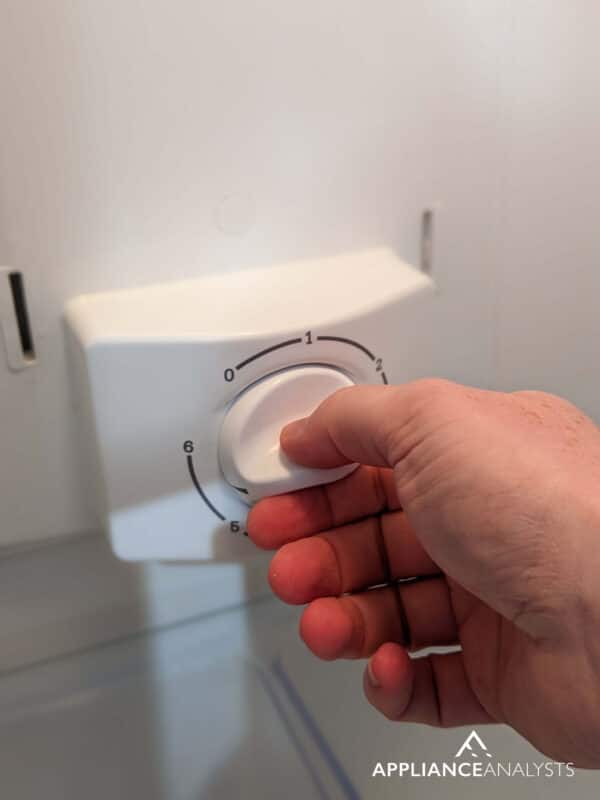Are you stuck trying to figure out what the red button on your fridge does?
Being unsure about what will happen when you press the fridge button can be quite frustrating.
Luckily, you’ve come to the right place for answers.
Traditional fridges have a red button that acts as a defrost switch. Pressing it helps eliminate ice of frost buildup, ensuring the proper functioning of your appliance.
Keep reading to learn more about the red button in fridges!
What Does the Red Button in Your Fridge Do?
In my experience, most refrigerators have a red button that acts as a defrost switch.
Modern refrigerators have an Auto Defrost or Frost Free function that automatically heats the cooling element (evaporator coil) to melt frost or ice. Then, the compressor’s heat evaporates the resulting water into the air.
However, not all fridges offer the Auto Defrost function. In some older models, you’ll need to manually defrost your fridge by pushing a red button.

So, if you see a red button in your fridge, it’s probably a defrost switch. If you press it, your appliance will start melting any ice or frost buildup. Then, the water will drip into a tray.
The defrosting process usually takes a couple of hours, but the duration will vary depending on your fridge’s size, model number, and brand.
What Happens if You Don’t Press the Red Button in Your Fridge?
As mentioned above, the red button in mini fridges and traditional refrigerators serves an important purpose: it acts as a defrost switch. But what happens if you don’t press it?
If you don’t press the red button in your fridge regularly, frost buildup will take up a lot of space, impacting airflow and keeping your appliance from cooling properly.
As a result, your food can spoil, and your refrigerator can smell bad due to the accumulation of bacteria. Try defrosting your fridge when necessary to prevent performance issues from happening.
You should press the red button in your fridge whenever frost or ice buildup is 6 mm (1/4 inch) thick.
Note: Defrosting your refrigerator is a maintenance procedure that will prolong the life of your appliance.
If you have a large refrigerator, defrosting can take several hours. To speed up the process, place a bowl or saucepan filled with boiling water on the middle shelf of your refrigerator.

Keep in mind that while the defrosting process can be slow and tedious, you should never use knives, spatulas, forks, scissors, or any other sharp objects to punch through the ice, as you can puncture the walls and damage your appliance. If you want to scrape some ice off, you’ll need to use a plastic spatula.
How to Prevent Frost Buildup? 3 Simple Tips
Although defrosting your refrigerator is a maintenance procedure that you should do regularly, there are different ways in which you can prevent frost buildup, such as:
- Keep the door closed: If you open your fridge many times during the day, warm air will get into your appliance and mix with cold air, creating humidity, which can turn into frost. Try opening the door only when necessary and checking the door seals.
If the door seals are damaged please replace them. I also recommend applying a thin layer of petroleum jelly (Vaseline) over the seals to protect them.
- Check the temperature: You can also avoid frost from building up by ensuring your refrigerator is set to the correct temperature. Your fridge should sit between 3 °C (37.4 °F) and 5 °C (41 °F).
- Don’t Store Warm Food: Storing warm food containers in your fridge can raise the internal temperature, leading to excess moisture and frost buildup. Try letting your food cool down before storing it in your fridge.

If you want to get any replacement part – or see how much one would cost – click to enter your model number in the search bar below. Our partners at AppliancePartsPros stock almost every part with free guides on how to install them.

Understanding Your Fridge’s Red Button
Hopefully, now you know what the red button or switch inside fridges does.
Remember that you’ll need to push the red button to defrost your refrigerator whenever the ice layer is 6 mm (1/4 inch) thick.
Don’t forget to keep your fridge closed, avoid storing warm food, clean the door seals, and check the temperature regularly to prevent frost buildup.
Thank you so much for taking the time to read this article. If you found it helpful, please check out our related posts below.
Have a wonderful rest of the day!







